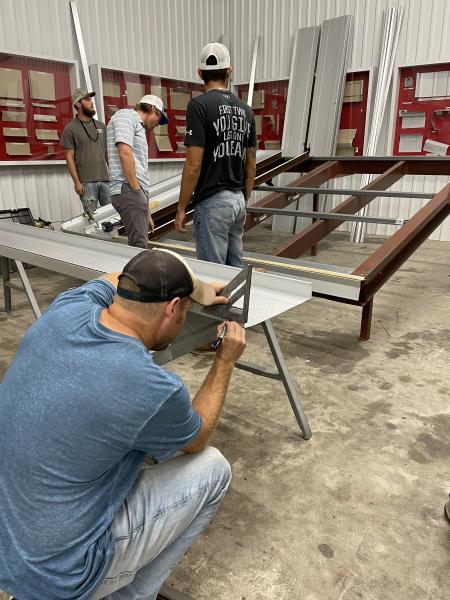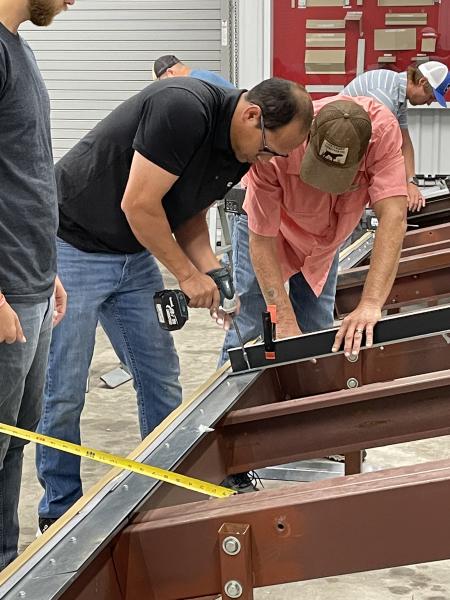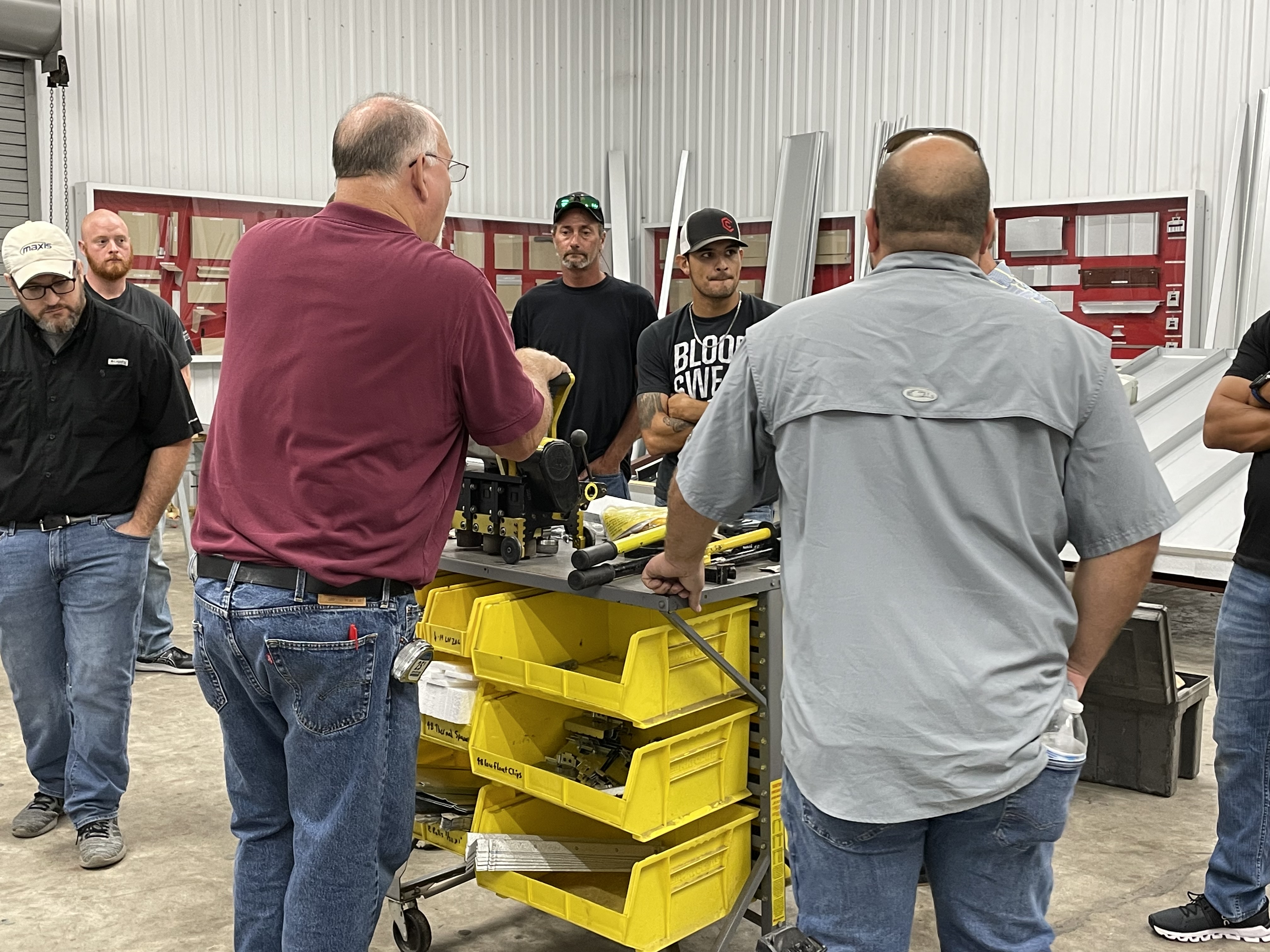Manufacturer certification programs can be a source of confusion. Most often, the confusion stems from using words like “certified,” “approved,” “authorized,” and “qualified” interchangeably. While they may mean the same thing to architects and homeowners, those terms often mean completely different things to manufacturers and contractors.
For this article, let’s assume that “certification” means an installer who has completed system-specific installation training by manufacturer—as my experience is in roofing, and particularly metal roofing, I will be approaching the topic from that lens. With that definition established, let's focus on discussing the benefits of being a “certified” installer for your next project.
1. Better Quality Installs
 While we all know there are no guarantees in life, being a certified installer certainly increases the odds of a better-quality installation. For starters, attendees are exposed to the various system components during the certification process. In the instance of a roofing system, an installer would become familiar with how the individual pieces go together and what "proper installation" means so far as the manufacturer has defined it. Equally important is that good training programs also address common errors to avoid.
While we all know there are no guarantees in life, being a certified installer certainly increases the odds of a better-quality installation. For starters, attendees are exposed to the various system components during the certification process. In the instance of a roofing system, an installer would become familiar with how the individual pieces go together and what "proper installation" means so far as the manufacturer has defined it. Equally important is that good training programs also address common errors to avoid.
2. Weathertightness Warranty Requirement
While the expectations vary by manufacturer, it is quite common for manufacturers—especially for roofing materials—to require contractor certification for weathertightness warranties. Problems can occur when the specifications don’t require contractor certification, yet it’s a requirement for warranty issuance by the manufacturer. When the installing contractor isn’t certified, the manufacturer may be within its rights to refuse to issue the warranty. As you can imagine, this is especially problematic when it’s not identified until after installation is complete.
Consequently, if you plan to offer a weathertightness warranty with your project, the first step should be to consider the warranty type required and the manufacturer’s requirements for warranty issue. If you’re unsure, it’s always best to have a manufacturer’s representative review the architect’s plans and specifications to ensure you’re covered. While that may feel like an extra step to you, it can save untold confusion, missed expectations and change orders.
3. Commitment
While becoming a manufacturer-certified installer isn’t an impossible process, there are most certainly hard and soft costs involved. The hard costs include things like course registration fees and travel expenses. But in the tight labor market, the soft cost of taking one or two key crew members out of the field for a couple of days is often the more significant of the two costs.
Consequently, becoming a certified installer typically means you are committing to the learning the proper installation techniques for whatever product, such as metal roofing. General contractors and architects routinely place a high value on the commitment that becoming a “certified” installer requires. It’s important to note that you are also committing to a partnership with the manufacturer. Those types of commitments can indicate professionalism and a respect for craftsmanship, potentially leading to higher quality installs as well as more and better jobs.
Becoming manufacturer certified also can be a perk: a way to retain employees in a tough staffing market. By having crew members become certified, you’re showing a commitment to them as well.
4. Manufacturer Contact
Wouldn’t it be nice if you could “phone a friend” for questions that come up during installation? While not guaranteed, there’s a good chance that becoming a certified installer means just that. Manufacturers that offer training programs to certify roofers are committed to having their products installed correctly. Consequently, the folks who teach the certification classes present a wealth of knowledge. By spending time with the trainers during that certification process, relationships between the manufacturer and class attendees routinely develop. And perhaps most importantly, contact information is usually also exchanged.
The trainers can often be a great source for product-related questions once crews are on the jobsite. Over time, they have seen unique conditions you can only imagine, identified problems and solutions, and developed best practices. All of that means that when someone on the project team (architect, contractor, or your superintendent) has a question, you’ll likely have an existing relationship with an expert when you have become a certified installer.
5. Quicker Install
The chances are good that every owner you work with wants their project finished on the project schedule, if not before. In a perfect world, that’s a reasonable expectation. But we all know that construction is a messy business. Delays occur on materials from other trades, mistakes and re-work happen, and schedules often fall by the wayside early in the project. While becoming a certified contractor can’t work miracles with your project schedule, in our experience, certified installer crews routinely install products quicker than their non-certified counterparts.
This doesn’t mean non-certified contractors are bad, but it could reflect a lack familiarity with manufacturers’ specific products, parts, and pieces. So instead of taking time to learn the system on a project, certified installers arrive at the site with the experience that allows them to reduce the install time and get projects done more quickly.
HOW TO INSTALL A METAL ROOF ON A HOME
Key Considerations for Achieving Manufacturer Certification
While the benefits of manufacturer certification are numerous, there are some key considerations when including this selling point on your projects.
 Programs differ. While the term manufacturer certification is used interchangeably throughout residential construction, certification programs vary widely between manufacturers. Some manufacturers conduct their programs in a conference room at a local hotel where participants are taught only through PowerPoint or by reviewing install manuals for one or two hours. Other programs are much more robust, lasting one or two days and include contractors physically working with tools, materials, and accessories to learn hands-on how to install the product properly. Additionally, the more robust programs typically require attendees to take and pass an exam after the training, where a passing score is usually necessary to obtain certification.
Programs differ. While the term manufacturer certification is used interchangeably throughout residential construction, certification programs vary widely between manufacturers. Some manufacturers conduct their programs in a conference room at a local hotel where participants are taught only through PowerPoint or by reviewing install manuals for one or two hours. Other programs are much more robust, lasting one or two days and include contractors physically working with tools, materials, and accessories to learn hands-on how to install the product properly. Additionally, the more robust programs typically require attendees to take and pass an exam after the training, where a passing score is usually necessary to obtain certification.
Some manufacturers also include basic credit checks as a part of their certification processes. While the approach varies, manufacturers often look at how long a company has been in business, payment history and an asset to debt ratio to ensure financial strength as part of their certification process. Some manufacturers also research the contractor to ensure there isn’t any open litigation pending.
Bidders can be limited. While becoming a certified installer can help ensure the benefits previously discussed, it’s important to note that project specifications requiring certification limit the bidding pool. Depending on your perspective, fewer bidders on a project can be a good or a bad thing. Architects often want more bidders to ensure competitive numbers, while contractors typically prefer a smaller bidding pool to limit the madness on bid day and bid shopping before a project is awarded. The requirement for certified installers can be a double-edge sword. It can effectively keep your competitors out, but if you aren’t certified with the specified manufacturer, it can also prevent you from bidding on the project in a couple of ways: You may be able to get certified but can’t do so within the time frame the project requires; or you simply may not be able to meet the manufacturer’s specified criteria.
Certification expires. Once achieved, manufacturer certification typically lasts for a limited time frame. Once the established time passes, contractors are required to complete a recertification process. This process varies widely by the manufacturer and is often impacted by the contractor’s quantity and quality of work during their initial certification window.
Kathi Miller is in charge of Architectural National Accounts at McElroy Metal. She can be reached at kmiller@mcelroymetal.com.













